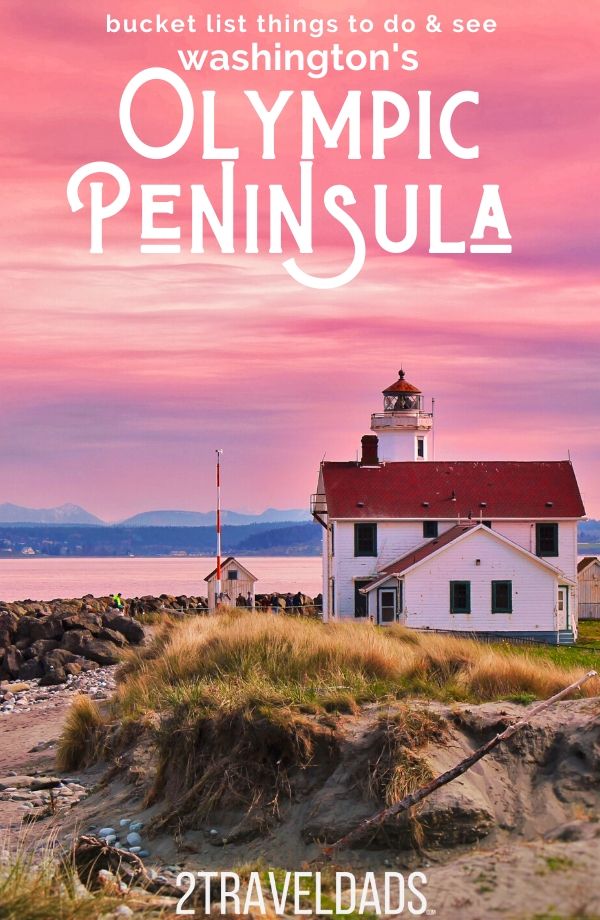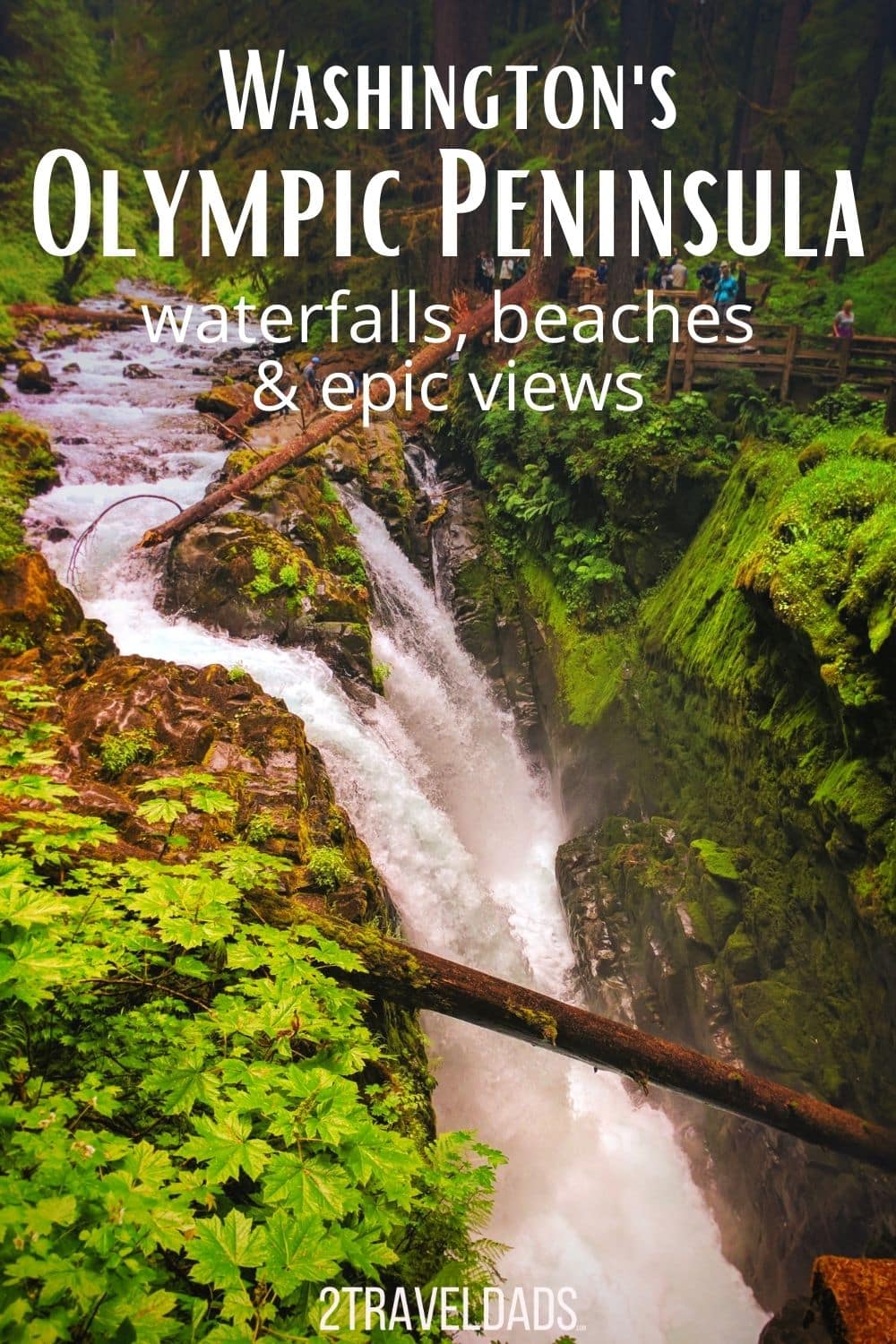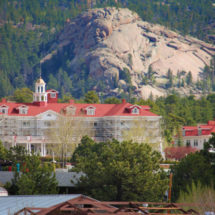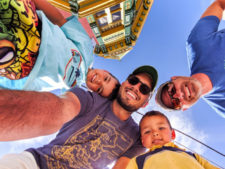The Olympic Peninsula is amazing. It should be considered one of the seven wonders of the world even though it’s such a big region and not just one Wonder. This is our bucket list of the most epic sites and things to do on the Olympic Peninsula of Washington. Almost all of these things to do are free and can be done year-round.
As you’re planning your own time on the Olympic Peninsula, feel free to reorder these however make sense for you. There are of course more things to do on the Olympic Peninsula than listed, but these take the cake and cannot be missed when you travel the OP.
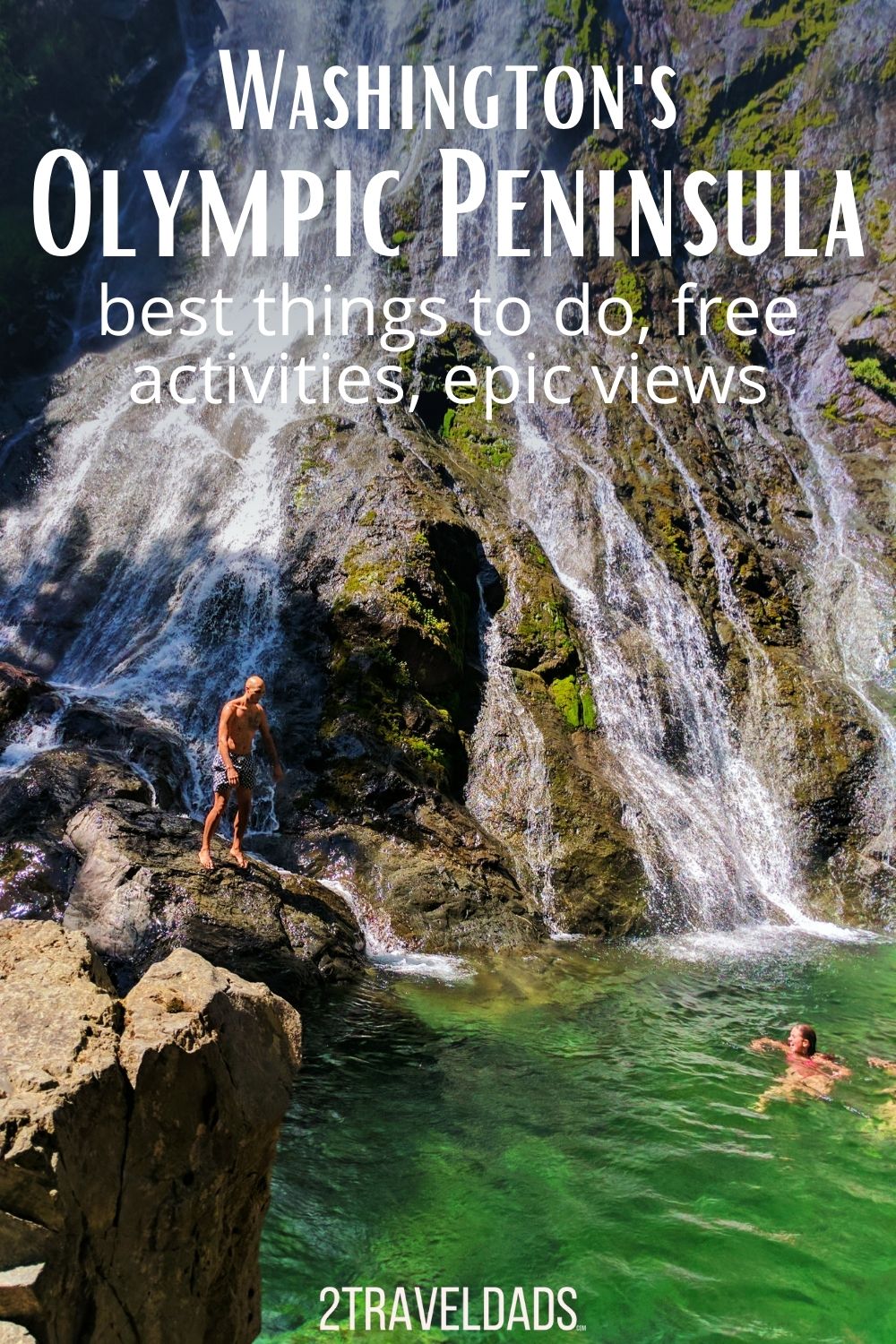
How to get to the Olympic Peninsula
I read an article that said there are two ways to get to the Olympic Peninsula. I laughed out loud for a long time because it was so incorrect. There are twelve different ways to get to the Olympic Peninsula and explore along the loop road, so whoever said there are only two ways was extremely wrong. If you want to do all the best things to do on the Olympic Peninsula, it’ll probably take at least two trips, but why not make lots of trips throughout the year or over time and really get to explore the OP in depth.
Olympic Peninsula by boat
You can take five different ferries to the Olympic Peninsula, and depending on your itinerary and starting point, any may be the right option for you. The five Washington State Ferry routes that sail to the OP are:
- Seattle -> Bremerton
- Seattle -> Bainbridge Island
- West Seattle -> Southworth
- Edmonds -> Kingston
- Whidbey Island -> Port Townsend
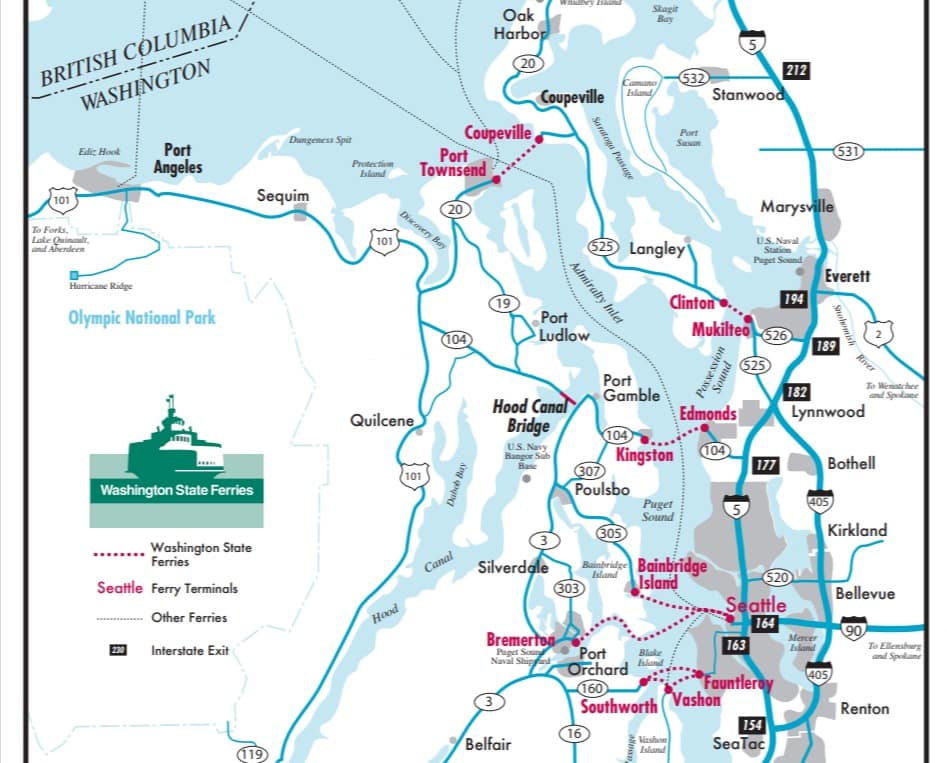
There are two more ways to get to the Olympic Peninsula by boat. The first is to take the MV Coho Blackball Ferry from Victoria, British Columbia. This crossing is about 90 minutes and sails twice daily from Victoria, BC and returns twice daily from Port Angeles. This is the easiest way to get to the Olympic Peninsula from Vancouver Island or mainland BC.
The last option by boat is to arrive via a private charter or personal boat. There are many marinas around the Olympic Peninsula and moorage is much less expensive than docking in Anacortes or Seattle. If you’re a sailor or looking to make a sailing plan with friends who have a boat, there are lots of port towns you can visit, and several are actually on our Olympic Peninsula bucket list.
I’ll be honest, boating is one of the best things to do on the Olympic Peninsula. It’s a beautiful destination surrounded by water.
For your listening pleasure: check out our podcast episode all about Getting to Victoria BC (including Olympic Peninsula info)
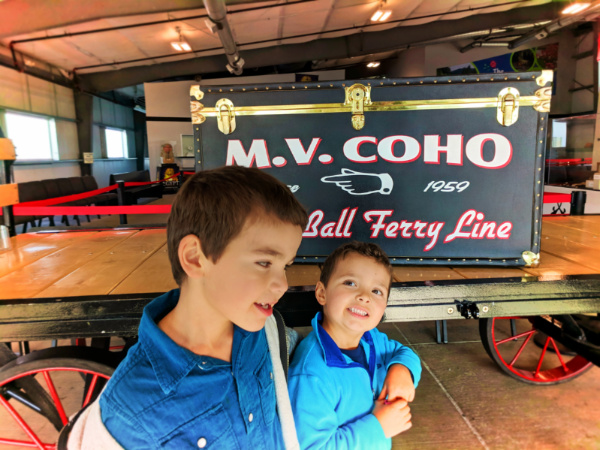
Driving to the Olympic Peninsula
There are also three routes onto the Olympic Peninsula if you’re driving. Check out which is right for you:
- You can drive across Highway 16 and the Narrows Bridge from Tacoma
- You can head north on Highway 101 out of Olympia, the state capitol, on the eastern side of the OP
- Drive north from Astoria, Oregon along Highway 101 on the western loop of the Olympic Peninsula
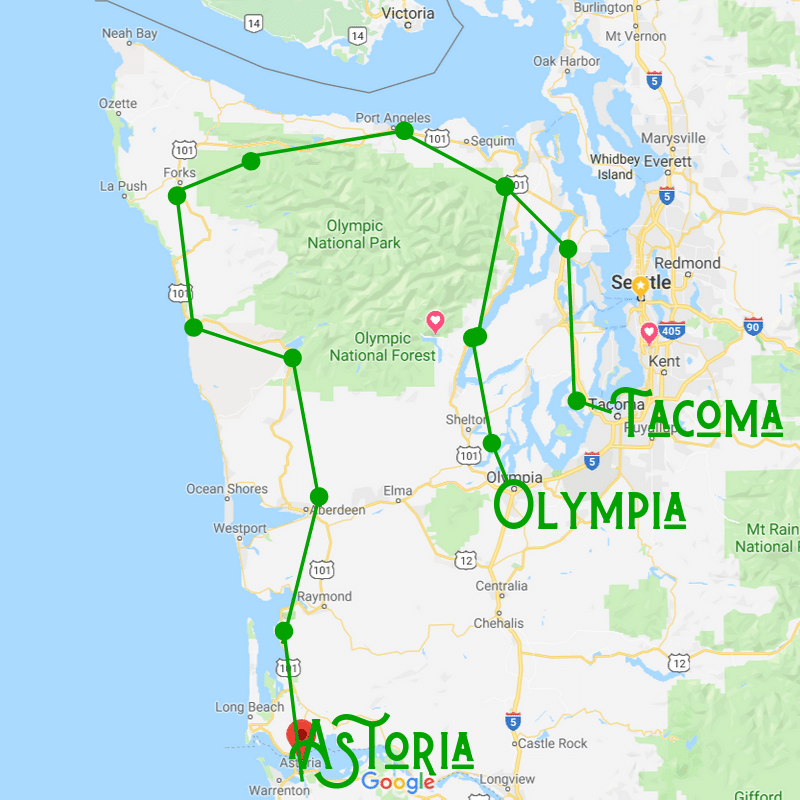
Flying to the Olympic Peninsula
This is the most unlikely way to get to the Olympic Peninsula, but it’s an option. From Seattle, you can take a seaplane to a variety of locations, including Port Ludlow and Port Townsend. This is not a cost efficient option, but the experience is memorable and it offers a beautiful view. There are also three regional airports you could potentially fly into on private charters: Bremerton National (Kitsap County), Fairchild International (Port Angeles) or Jefferson County International Airport (Port Townsend).
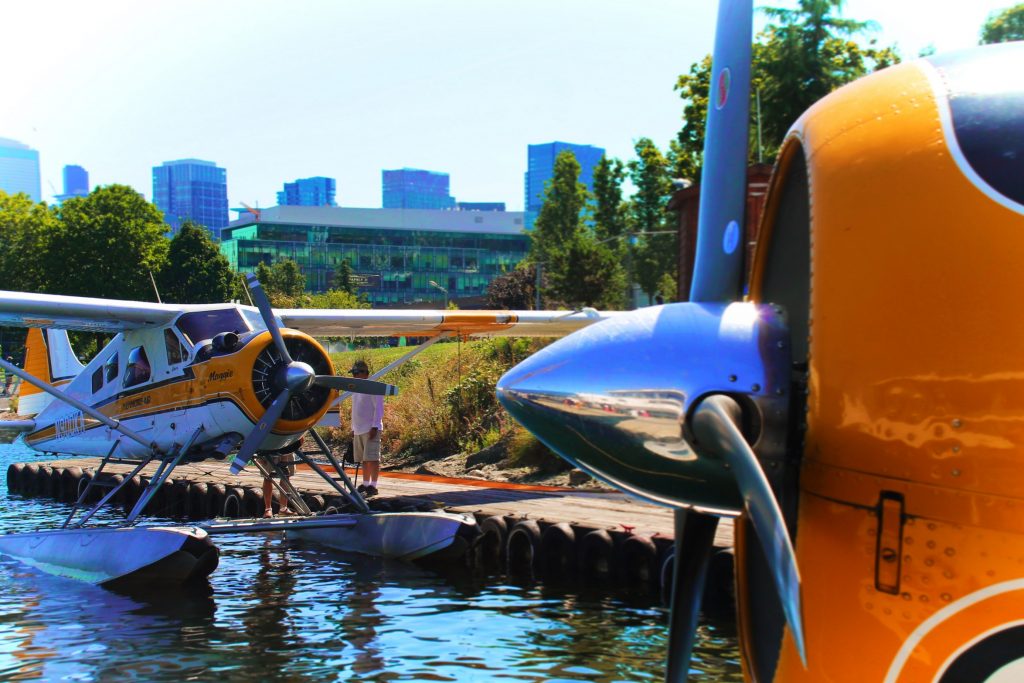
Best Things to Do on the Olympic Peninsula
All of our recommendations for things to do captures the heart and wonder of the Olympic Peninsula. These activities and sights are unique to the Oly Pen and make for the best Pacific Northwest experiences that you’ll never forget. Find all of the sites and extra choices on this Google Map.
Explore the rainforest in Olympic National Park
We’re going to start with exploring the rainforest of Olympic National Park because there are several places you can do it and it really is epic. Like right out of Lord of the Rings epic.
The best places to visit the rainforest of Olympic National Park are at the Hoh Rainforest, at the Quinault Rainforest, Queets rainforest (way off the beaten path) and at Staircase (near Lake Cushman). And Sol Duc too. Due to the rain shadow effect, the rainforest around forks Washington is some of the most dense old growth forest in the United States. It’s a favorite with kids and out-of-town visitors, no matter which part of the forest we visit.
The Sol Duc, Quinault and Queets rainforests are free to visit, but to access the Hoh Rainforest and the area at Staircase, there is a National Park entry fee, which is covered if you have the America The Beautiful (National Parks) pass.
Note: each of the rainforest areas is open year-round, but access is weather dependent.
- Hoh Rainforest – map here
- Quinault Rainforest – map here
- Queets Rainforest – map here
- Sol Duc Rainforest – map here
Sol Duc River Rainforest and Falls
The area along the Sol Duc is really unique and beautiful and includes both Sol Duc Falls and the Sol Duc Hot Springs. This part of Olympic National Park is closest to the cities on the Olympic Peninsula, primarily Sequim and Port Angeles. Access to the rainforest is via the Sol Duc Falls trail and Ancient Groves trail.
Note: if you want to visit Sol Duc Hot Springs, it has a fee, both for lodging and access to the hot springs pools facility.
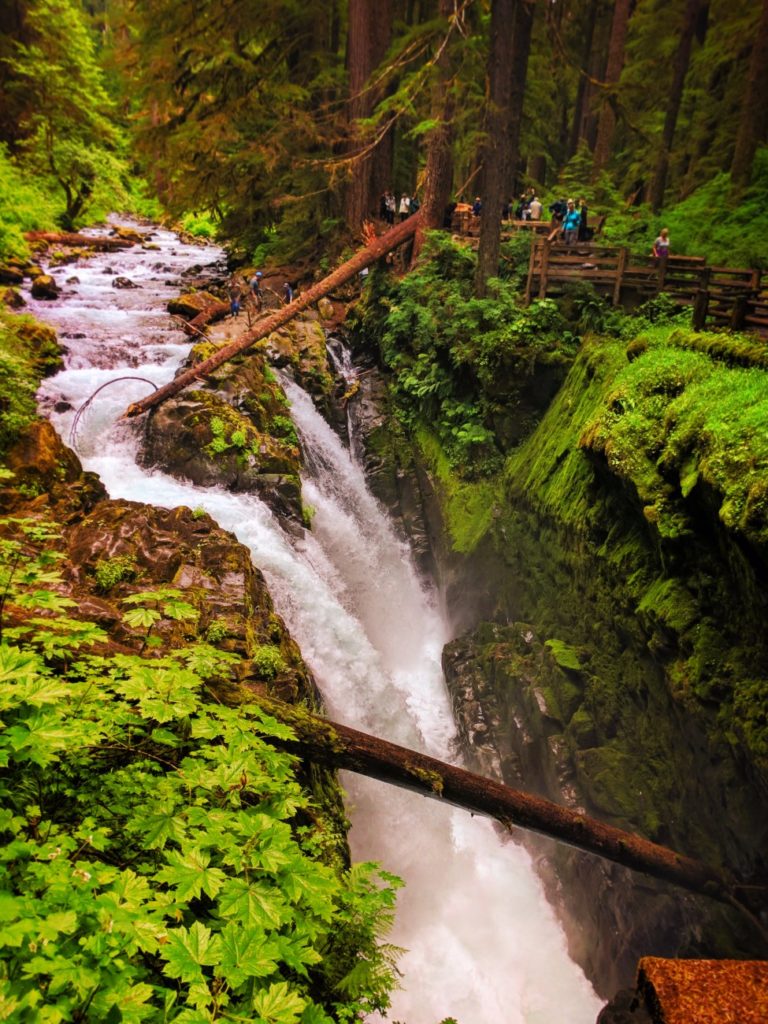
Rainforest of Lake Quinault and Queets
At Quinault, you’ll find Lake Quinault, an old farm site with really beautiful old equipment, and some until lodging options. Queets is just the rainforest with very rugged hiking trails. The road up the Queets river valley is rough and frequently damaged over the winter, but if it’s passable, the trees are amazing and the wildlife fascinating. So few people visit Queet and the Quinault Rainforest that I’d consider them hidden gems among things to do on the Olympic Peninsula.
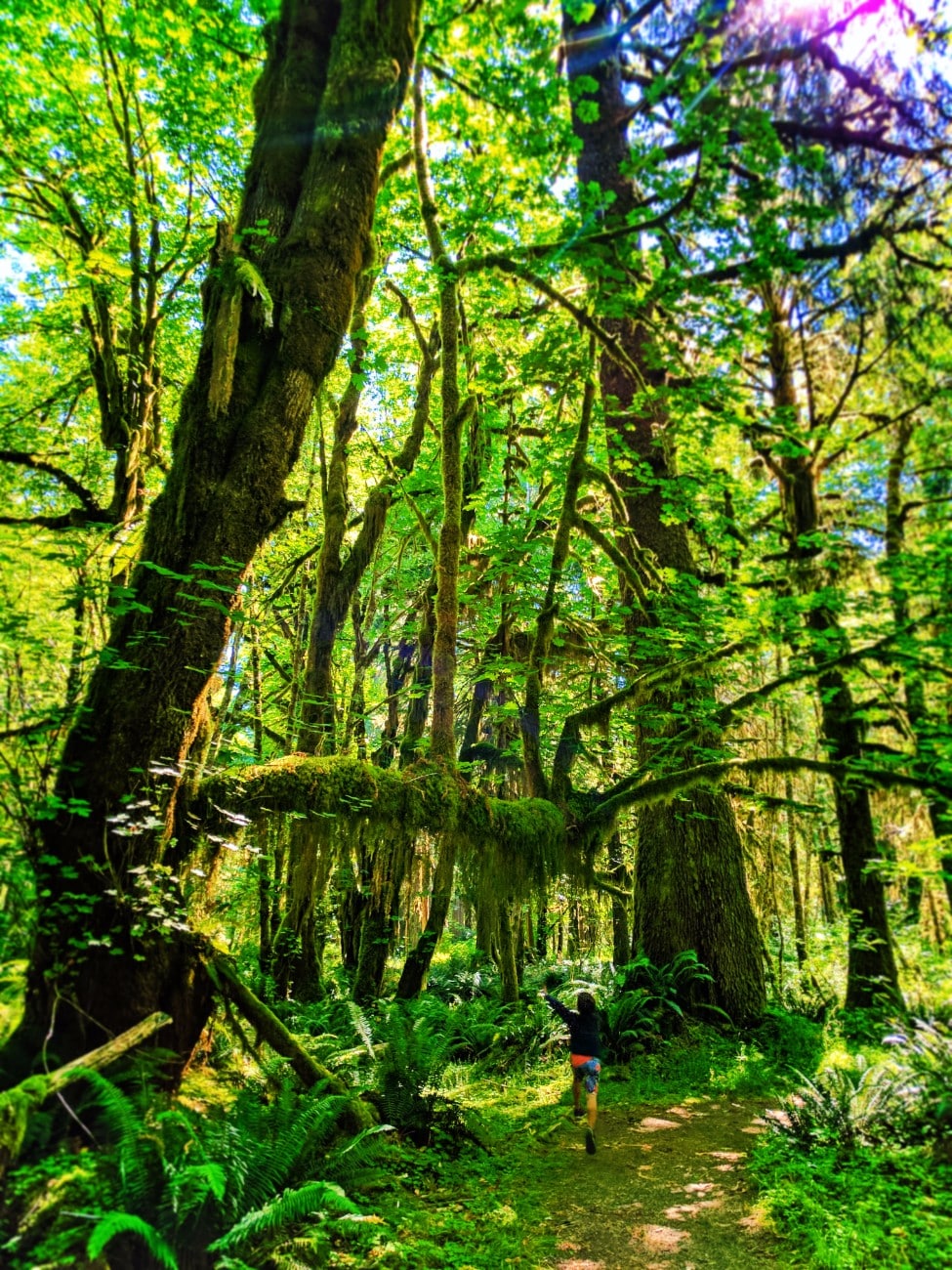
The Famous Hoh Rainforest
When you visit the Hoh Rainforest, you’ll find the most developed trails, which are also the most visited. If you’re thinking about when to visit the Olympic Peninsula to go hiking at the Hoh Rainforest, consider that summer months are ALWAYS the most crowded and since access to the Hoh is limited, you may not be able to enter the park as it fills up through the day.
Visiting the Hoh Rainforest in fall is my favorite; one of the best times to visit the Olympic Peninsula for sure. It’s one of the best National Parks for fall colors due to the enormous, ancient maples and the tender, colorful vine maples. In fall, the Hoh Rainforest takes on a completely different look and with fewer visitors, it’s magical around every trail.
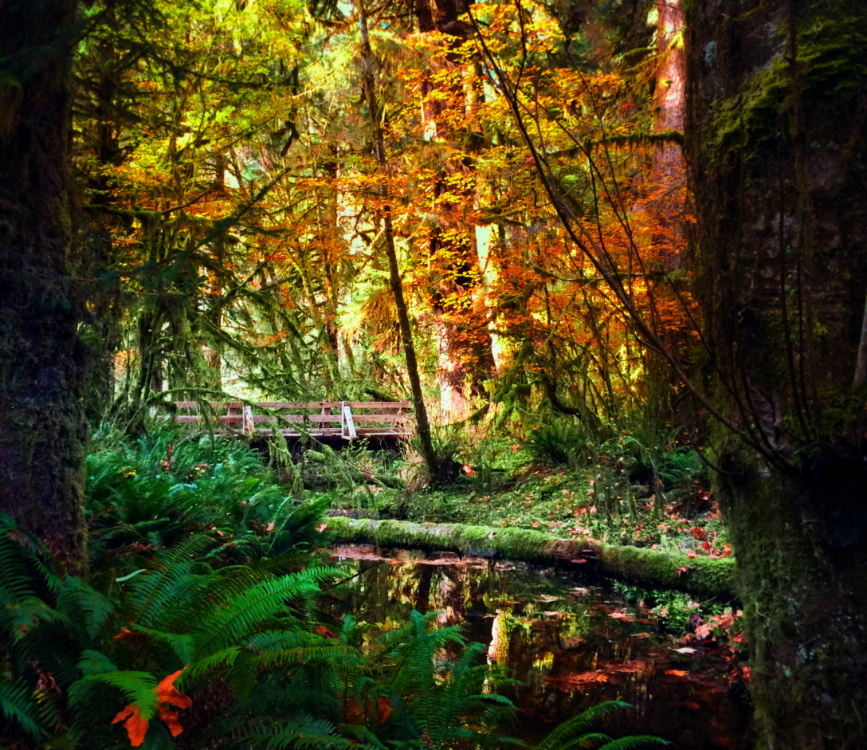
Staircase for Ancient Trees
Located at the southern end of Olympic National Park, Staircase is also a limited access area. Hiking at Staircase and exploring the rainforest above Lake Cushman will be very busy during summer months. You’ll find several well known hiking trails at Staircase and in the Olympic National Forest, but the best for getting up-close with the ancient trees is the Staircase Rapids trail (also a favorite swimming spot, see below).
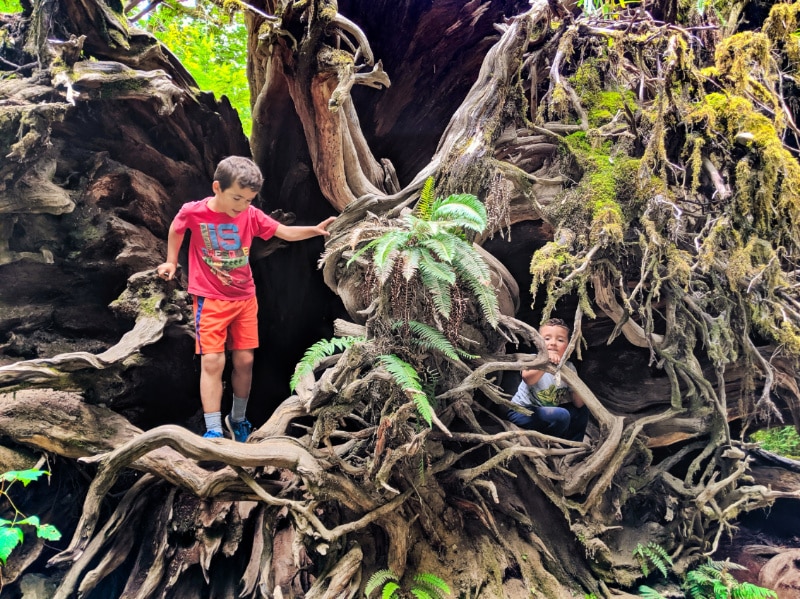
Hike to the Dungeness Spit Lighthouse
This activity is still on my bucket list because I haven’t made it all the way, but it’s one of the most epic, best things to do on the Olympic Peninsula. Of all activities on the Olympic Peninsula, this is going to be one of the most challenging. Imagine walking seven and a half miles in the sand to a lighthouse.
The Dungeness spit lighthouse in Sequim is still in operation and is manned in partnership with the US Coast Guard. Visitors can hike seven and a half miles in the sand to visit the lighthouse. That means they also have to hike 7 1/2 miles back. Most people who do this are actually going as part of a lighthouse keeper program and stay at the Dungeness Spit Lighthouse for a week.
Tip: For more information about being a lighthouse keeper as part of your Olympic Peninsula bucket list visit the website here: Lighthouse Keeper Program
If you don’t want to do the complete hike but still visit the Dungeness Spit, we recommend a stay at Domaine Madeliene in Port Angeles. It’s a nice getaway that’s close to the lighthouse and the Dungeness National Wildlife Refuge in Sequim, WA. Google map link here.
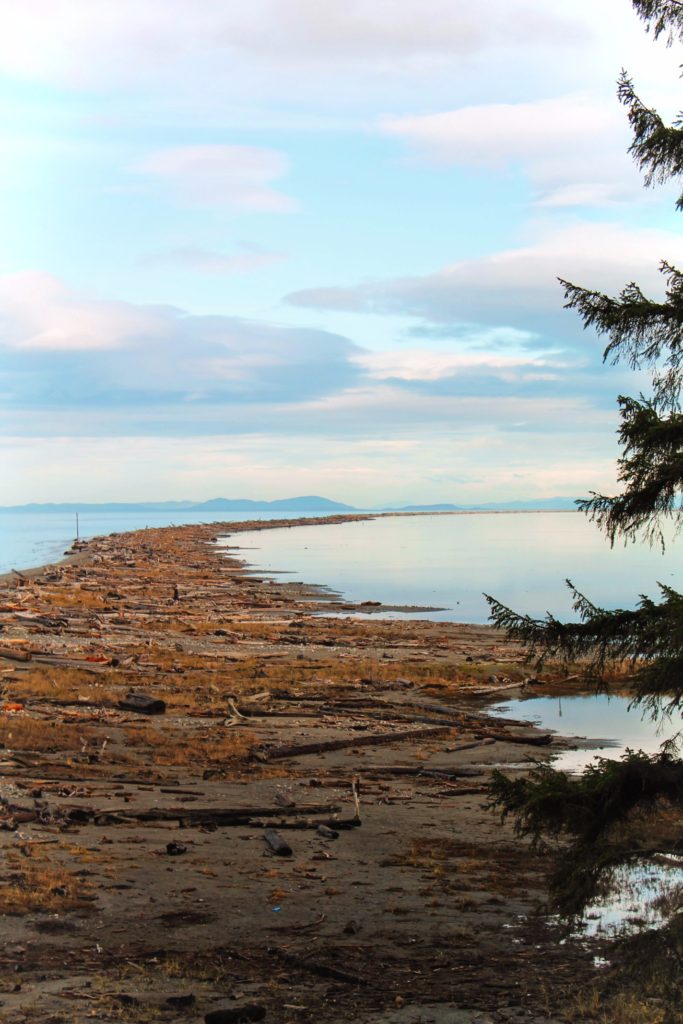
Listen to Roosevelt Elk Bugle in Fall
Until you have heard a bull elk bugle you haven’t had a true Pacific Northwest wilderness experience. This is one of the best things to do on the Olympic Peninsula for several reasons, the least of which is that you’ll have to make yourself calm and relaxed in nature for it to happen.
Herds of Roosevelt elk are found all around the Olympic Peninsula. When you drive into Sequim that is what the welcome sign is: a silhouette of a bull elk. They can be found around the foothills of the Olympic Mountains, both inside Olympic National Park and not.
There are several places where you are nearly guaranteed to see herds of elk. The first is the foothills of the Olympic Mountains at Sequim (like I just said). The next best place to see elk on the Olympic Peninsula is near the airstrip just outside the town of Forks. They’re always there.
Next place to find herds of Roosevelt elk is along the Hoh River near the Hoh Rainforest entrance to Olympic National Park. They are known to relax on the banks of the river both in the National Park and at Bogachiel State Park. We once came face to face with the biggest stag elk EVER at Bogachiel State Park. It was incredible!
Another common place that we’ve seen elk and heard them bugle in the fall is at Lake Cushman, where the Skokomish River turns into the lake. There is a large flat area that sometimes fills with water when the lake level is high, but when it’s low the elk tend to congregate there.

When to Visit the Olympic Peninsula for Elk
The best times to hear elk bugle on the Olympic Peninsula are from late September to mid November. The elk rut (elk mating season) sometimes lasts that long and sometimes is quite short. Keep your ears open whenever visiting though, as bugling can happen year-round.
Staircase area of Olympic National Park – map to viewing area here
Hoh River Valley – map to road here
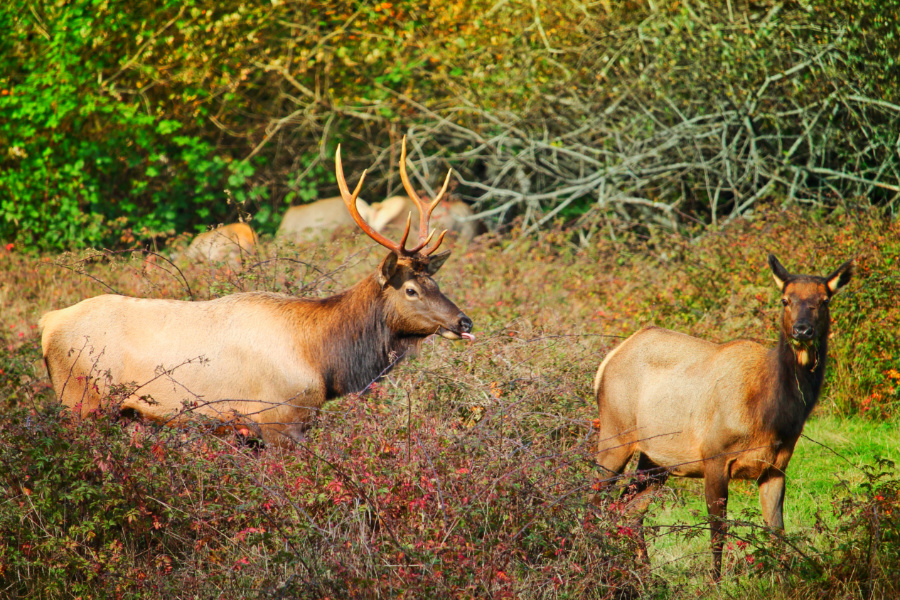
Relax Behind a Waterfall Deep in the Olympic National Forest
Before we tell you where this is all we can say is safety first. A little-known spot on the Olympic Peninsula that is really remarkable is Murhut Falls. Near the town of Brinnon, Murhut Falls is located in Olympic National Forest. It’s not within the National Park but is off of forest service road up in the foothills. Hiking to the falls is one of the best things to do on the Olympic Peninsula and is one of the more overlooked activities!
The fairly easy hike at just over two miles round-trip, Murhut Falls goes along steep valley walls into a small box canyon. Here you can scale down to the lower splash pool and then climb up to the upper splash pool. Since it’s a double waterfall it’s extra beautiful and a little more complicated. Check out these great kid-friendly hiking recommendations around Western Washington.
Depending on water level, you can cross the rocks and logs to access the cave behind upper Murhut Falls. It’s loud and quiet at the same time and the dripping moss is magical. The whole experience is quite remarkable and why it is one of our favorite activites on the Olympic Peninsula.
Map to Murhut Falls trailhead here
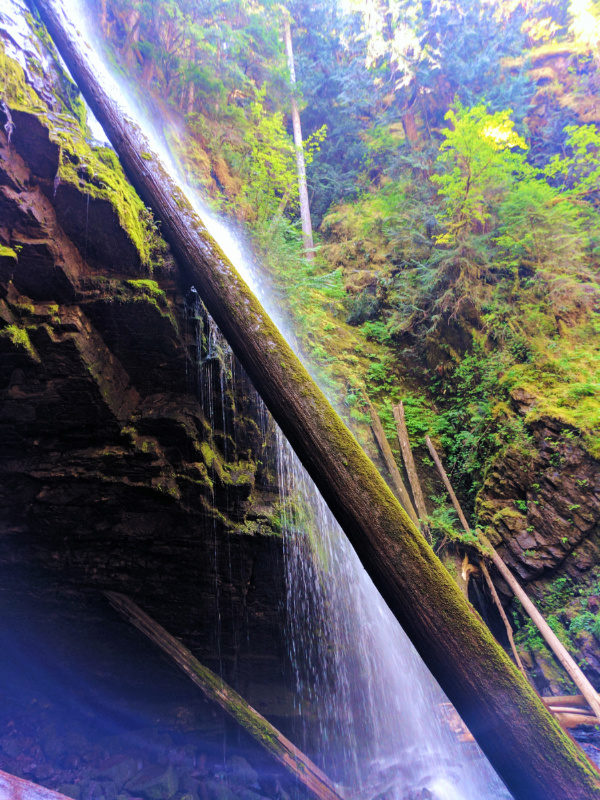
More Olympic Peninsula Waterfalls to Visit
In addition to Murhut Falls, there are other great waterfall hikes on the Olympic Peninsula all along the loop road (and off the beaten path). Our favorite waterfall hikes on the Oly Pen include:
- Marymere Falls – Storm King area of Olympic National Park
- Madison Falls – Elwha area of Olympic National Park
- Rocky Brook Falls – Brinnon, near Murhut Falls
- Bunch Falls – near Lake Quinault, south side
Waterfall hiking is one of the best things to do on the Olympic Peninsula any time of year. The best time to visit the Olympic Peninsula for waterfalls is mid to late spring. The combination of frequent rain and snow melt make the waterfalls extra full and even more beautiful than you expect!
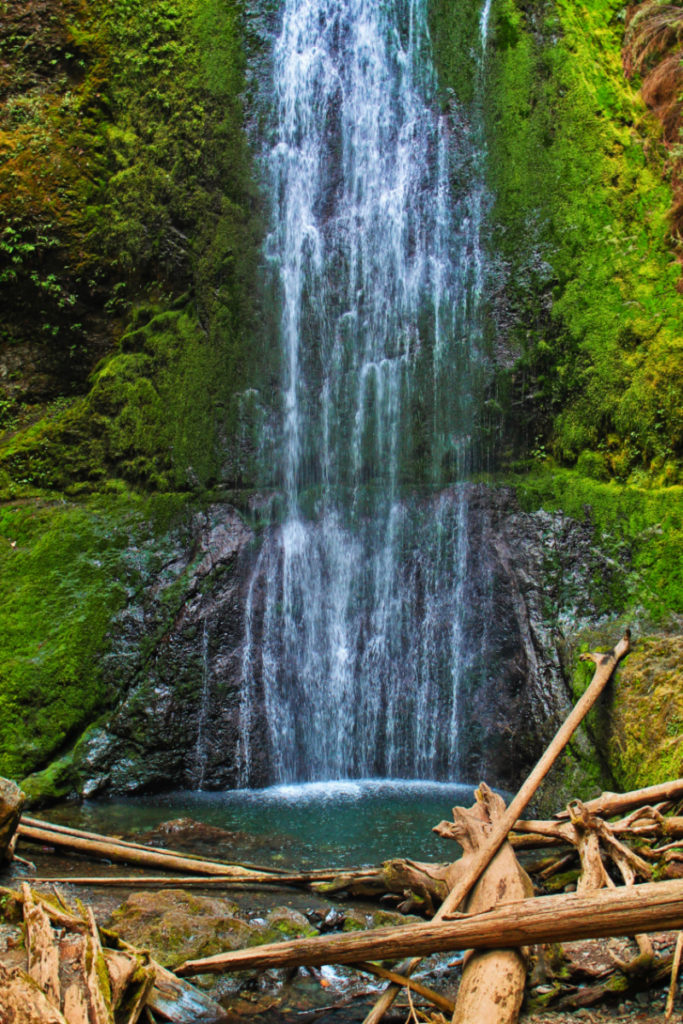
Olympic Peninsula Dahlias in September
Both Sequim and Port Gamble have remarkable dahlia gardens, which are always one of the most beautiful sights. If you’re not familiar, dahlias are the brightest and most interesting flower that blooms in fall. They vary from knee-high to full grown man height and can range in color from pure white to striped blossoms. The flowers can be as small as an Oreo cookie or as large as a dinner plate. The best time to visit the Olympic Peninsula for the dahlia gardens is Mid-September to early fall. That’s when the dahlias are in their peak bloom.
The Olympic Peninsula is an amazing place to experience these remarkable flowers. In Port Gamble, both in front of and behind the Port Gamble theater you’ll find the Dahlia Society’s gardens. In Sequim, at Carrie Blake Park, you’ll see a terraced garden near the amphitheater. It’s the perfect backdrop for a fall picnic when the dahlias are in bloom.
- Port Gamble Dahlia Society gardens – map here
- Dahlia Garden at Carrie Blake Park in Sequim – map here
In addition to these two impressive dahlia gardens, there is a wonderful dahlia culture alive and well at the farmers markets of the Olympic Peninsula. Starting in late summer and going until the blooms are over, the Kingston, Poulsbo and Port Townsend farmers markets have a variety of fresh flower stands. Here you can buy fresh cut dahlias and sometimes starts/tubers for your own garden!
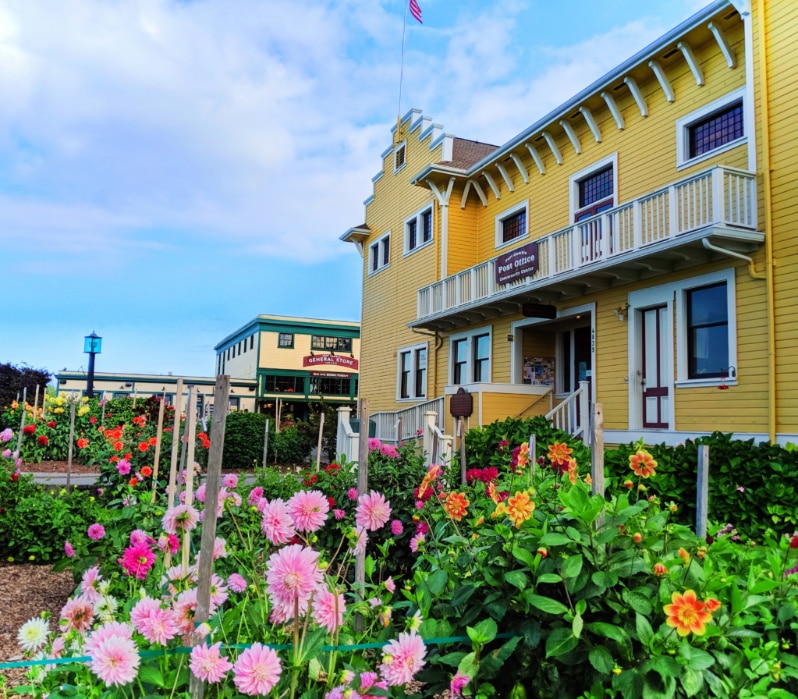
Deadman’s Cove, Southern Tip of the Olympic Peninsula
Heading down to the southernmost part of the territory we consider the complete Olympic Peninsula, Cape Disappointment State Park in Ilwaco is in a class of its own. Bike paths, incredible views across the ocean, and two lighthouses make it a unique place. It’s also technically part of Lewis and Clark National Park.
On the hike to Cape Disappointment lighthouse, if you’re paying attention you will see a cove down below the hiking trail to the West. That cove is called Deadman’s Cove and is accessible if you watch for the path. A beautiful sandy beach, turquoise water, and quiet calm from being sheltered from the wind, make it the perfect place for an afternoon picnic. It is perfectly Pacific Northwest. Having a picnic at Deadman’s Cove is one of the best things to do on the Olympic Peninsula and feels like you’re a world away.
Note: when you look online it states that Deadman’s Cove is “closed to the public.” There are guidelines regarding access and staying on the trail, but the area around the cove is open to the public (as of March 2021) for viewing and relaxing above the beach. To prevent erosion, there are some trails that are closed, but there are rest spots you can enjoy. Deadman’s Cove location – map here
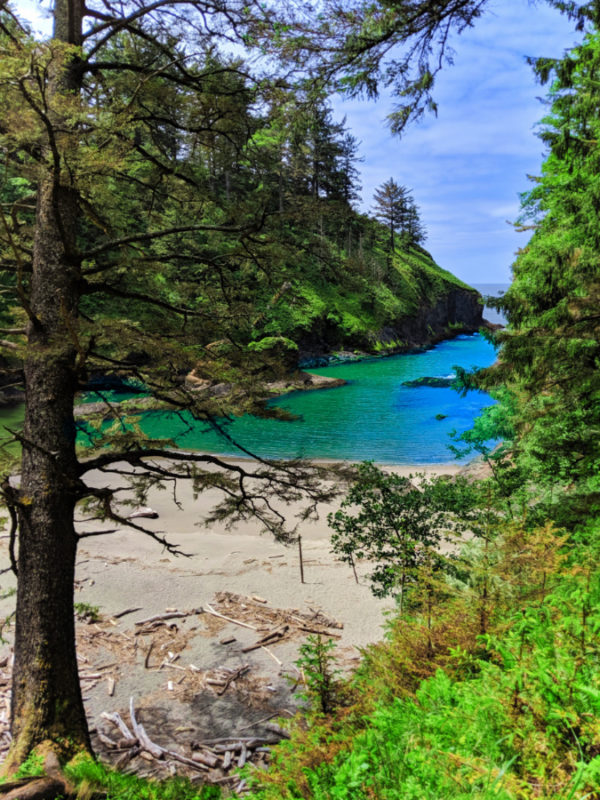
Other Must-See Sights at Cape Disappointment
The hike to the Cape Disappointment Lighthouse is gorgeous, as noted above, but there are also sweeping, epic views just north as you explore the park more. Spend a day hiking, biking and driving on North Head Road for an additional lighthouse (tour it during summer months!) and beautiful forests.
Stop at the Beards Hollow Overlook to watch waves crash on the beach below, or visit the Lewis and Clark Interpretive Center during a storm to see epic waves slamming the rocks below the Cape Disappointment Lighthouse. In any weather, there are views and great things to do at Cape Disappointment State Park.
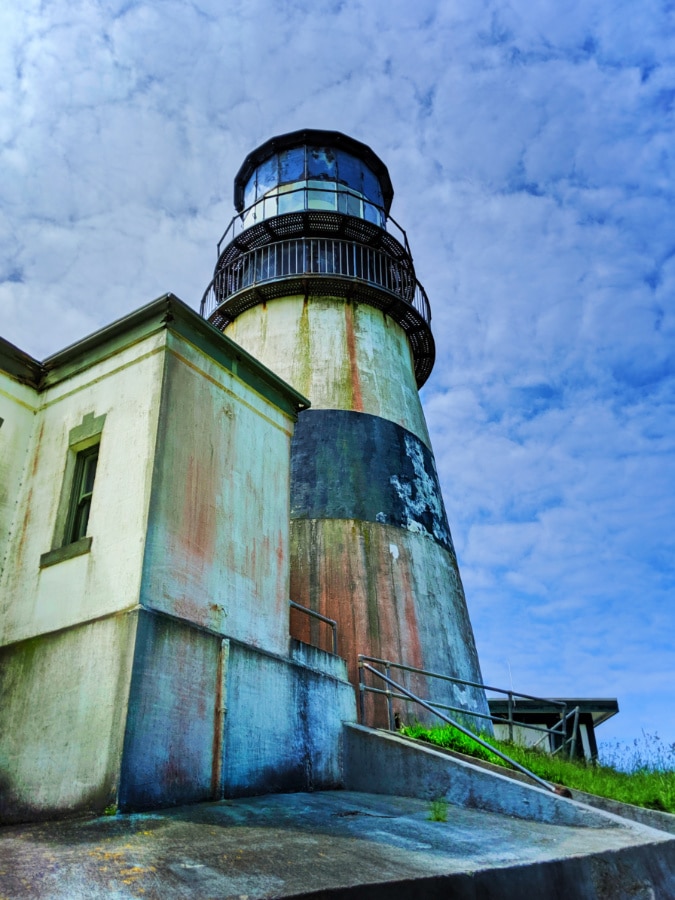
Cape Flattery: the Best and Last View on the Olympic Peninsula
Speaking of turquoise waters, our next epic site on the Olympic Peninsula is Cape Flattery. The hike to the end of the cape is one of the best things to do on the Olympic Peninsula, and it’s not even that difficult.
This is the northwesternmost part of the State of Washington and is really out there. Driving along the northernmost road and going through Neah Bay, you will come to the Cape Flattery trail head. The windswept forest is eerie but the views at the end of the trail are one of a kind. Hiking at Cape Flattery is best in nice weather, as the trail can be slick on the boardwalk areas.
Watch for whales, puffins, and sea lions why you sit and stare off towards Japan. There are picnic tables and benches so if you plan it right, you could even go enjoy sunset as you listen to the waves crash against the far-off island of the Cape Flattery Lighthouse.
The best time of year to visit the far stretches of the Olympic Peninsula is early summer and into fall. Being so remote, you don’t want to get stuck out here in bad weather, especially as the drive back to Port Angeles or any of the other Olympic Peninsula cities will be very windy on a narrow road. Cape Flattery Trailhead – map here
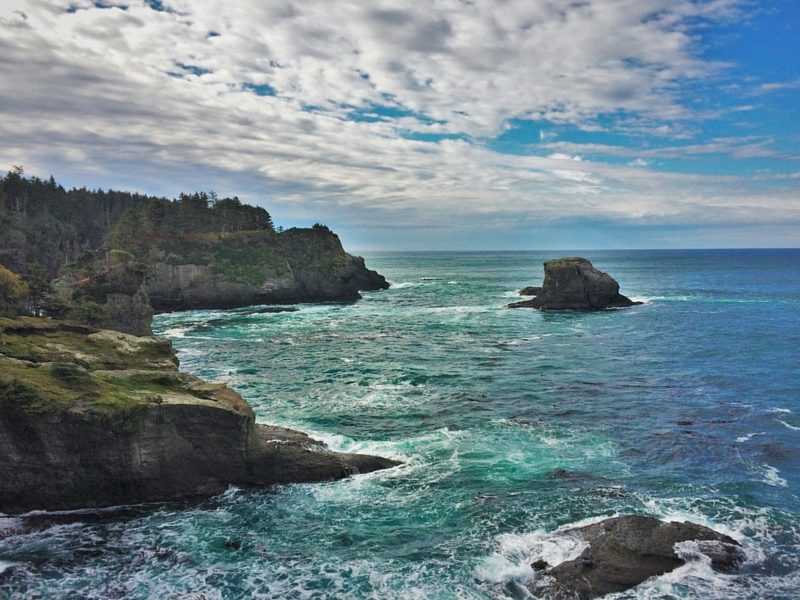
Jump Into Emerald Swimming Holes
I debated including these on our list of best things to do on the Olympic Peninsula because they are so special and few people visit. There are so few opportunities to swim outdoors in Washington that I have to share these spots so our friends and visitors know where to swim on the Olympic Peninsula.
Skokomish River Swimming Hole
The first spot requires a hike to get to the swimming hole. Staircase is the part of Olympic National Park just near the town of Hoodsport. Driving up from Hood Canal, about a half an hour into the mountains you’ll come to the Staircase Rapids trail head. There are many beautiful natural sights along the way but the reason you’re here is for some epic mountain river swimming.
On the south side of the Skokomish river along the Staircase Rapids trail you will find an access point to some enormous boulders in the river. Climbing out to the boulders you can look down into the purest emerald water you’ll ever find. Warning, that water is so beautiful because it is so cold being fed by glaciers. Jumping in is exhilarating and when you take in the scenery you almost don’t realize how cold the water is. Staircase Trail Head – map here
Note: be very mindful of water levels and the current. Even though this spot is much more calm than other parts of the river you need to be responsible for yourself.
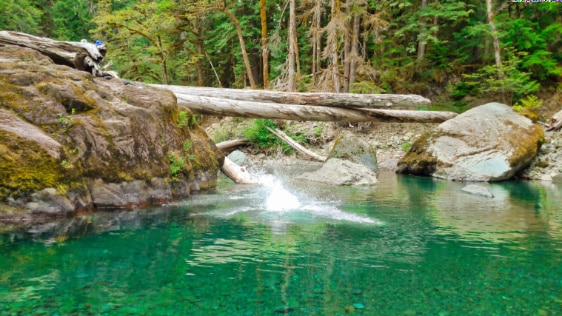
Rocky Brook Falls Swimming Hole
The other amazing Olympic Peninsula swimming hole is at Rocky Brook Falls. Very near the Dosewallips River and State Park, which is a great place to float on inner tubes, you’ll find parking along the county road. Whether your planning to jump in at the swimming hole or want to float the river, either are wonderful summer things to do on the Olympic Peninsula.
Walk a quarter mile up the trail and you’re at the perfect emerald green, crystal clear swimming hole. This is also one of our favorite waterfalls on the Olympic Peninsula, but swimming is the real reason you’re here! Rocky Brook Falls swimming hole – map here
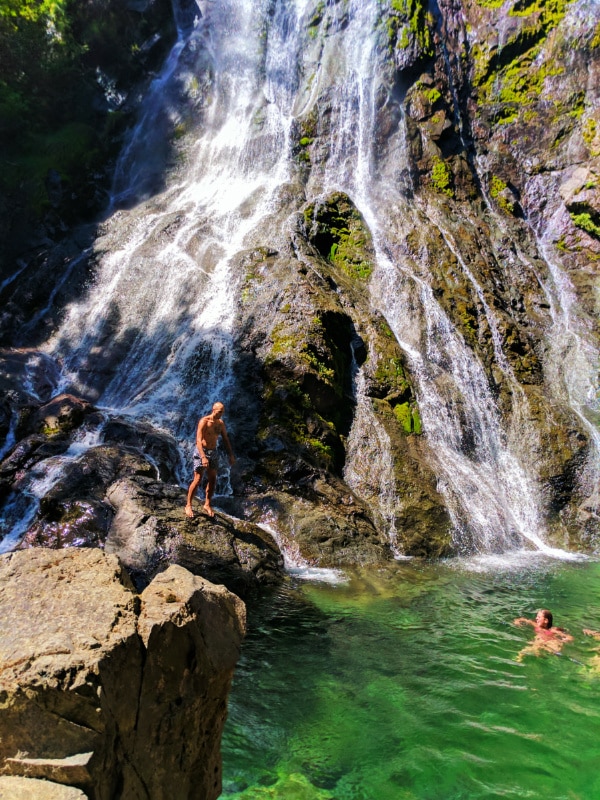
Search for Purple Clams on Pacific Beaches
Yes, there are a few beaches in Washington where you might find purple clams, but in the southern portion of the Olympic Peninsula, the spit extending into Grays Harbor at Ocean Shores is the best place to hunt for them. Purple clams have a brown exterior and then a vibrant inner shell. At medium to low tide, walk the inner beach and find some really colorful, unique ocean treasures.
While you may find purple clams in the Agate Passage of Suquamish and the coves of Moclips, Oyhut Wildlife Recreation Area is the best spot to find them. This is also a wonderful place for kayaking and bird watching. Oyhut Wildlife Recreation area – map here
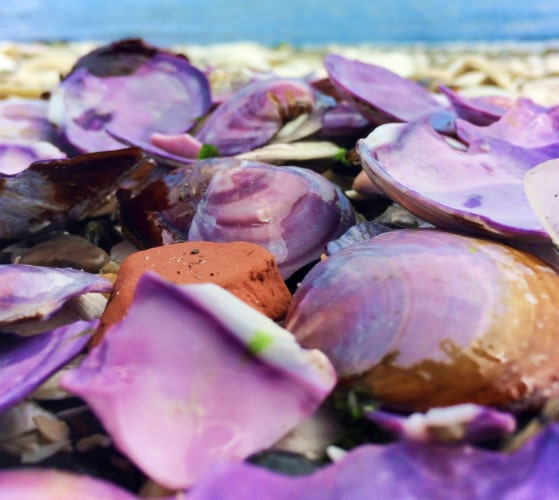
Witness Major Environmental Recovery at the Elwha
The Elwha River flows out of Olympic National Park and into the Strait of Juan de Fuca. It used to have two dams on it but starting in 2011 they were removed, allowing the Elwha River to flow its original course. It’s quite the sight to see.
Since then, the river valley has seen forests start to return, elk herds move in, and even long lost salmon runs start again. The Elwha River is an incredible example of environmental recovery and what’s possible with planning and active, caring communities. This is one of the best things to do with kids on the Olympic Peninsula because it’ll show them what’s possible and inspire them to be active in restoring and preserving natural areas. Access to Glines Canyon dam viewpoint and interpretive site – map here
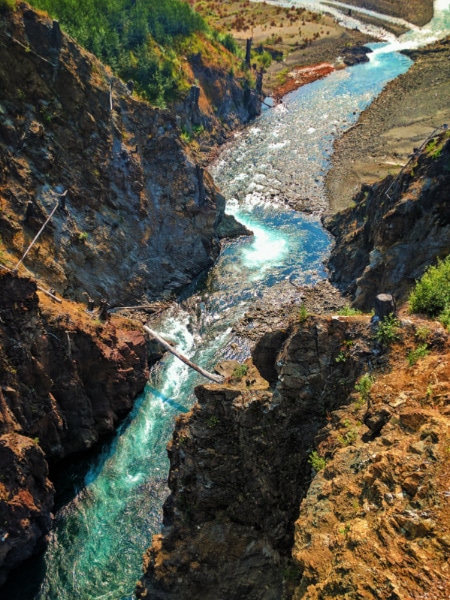
Enjoy Sunset or Sunrise Beside a Lighthouse
With a long nautical history, the Olympic Peninsula has several lighthouses to visit and enjoy. Not all of them are accessible to the public for going up into the lantern area, but almost all of them welcome visitors to enjoy the grounds and to take in a sunset or sunrise.
Point Wilson Lighthouse, Port Townsend
Port Townsend is home to more than picturesque Victorian buildings. Down at Fort Worden State Park is the Point Wilson Lighthouse. A long stretch of beach, a few bunkers, and windswept trees make it an ideal spit for catching a Pacific Northwest sunset. The view from Point Wilson is of Whidbey Island’s yellow and white cliffs. As the sun goes down the cliffs turn pink and the clouds glow all the way to Canada.
Other fun things to do at Fort Worden include kit flying, exploring the many bunkers, and enjoying Old Time Fiddler Fest. There is camping at Fort Worden, as well as the old Officers’ Quarters that you can book to stay in. Point Wilson Lighthouse – map here

Point No Point Lighthouse, Hansville
Another wonderful lighthouse to visit for sunset is the Point No Point Lighthouse on the Kitsap portion of the Olympic Peninsula. A very small lighthouse, Point No Point is cute and a great place to watch the sunset, or sunrise if you want to get up early. Beach combing, watching eagles, and observing passing marine wildlife are all great things to do at Point No Point.
For a really unique weekend getaway, you can book a stay at the Point No Point Keeper’s Quarters. While it may not be the quietest accommodations as passing ships may blast their horns and early visitors and fishermen may be loud, it’s acute place to stay and is perfectly Pacific Northwest. Point No Point Lighthouse – map here
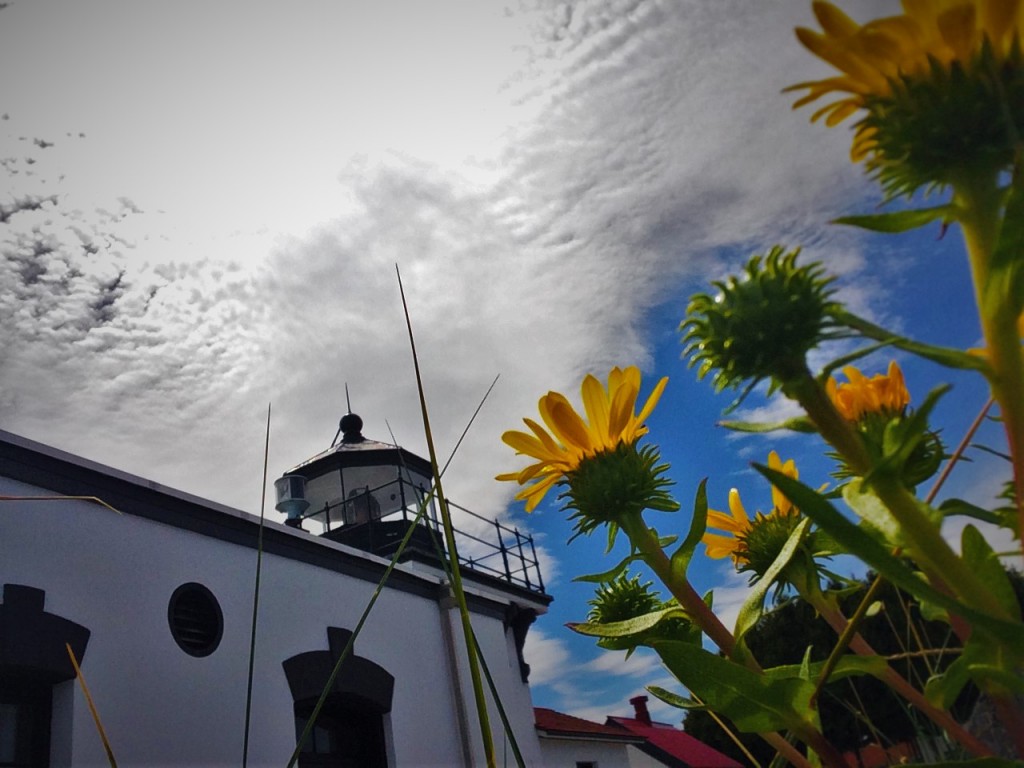
Relax on the prettiest beach in Washington: Ruby Beach
So many of the things to do on the Olympic Peninsula are a part of Olympic National Park, and that includes Ruby Beach. South of the Hoh Rainforest you’ll find stretches of beach similar to the Oregon Coast’s famous sea stacks, but the best of these is Ruby Beach. The sea stacks are small, but the sand, driftwood, sea star nursery and tide pools make this the most beautiful beach on the Olympic Peninsula.
In recent years, Ruby Beach has become more and more popular, mainly because there are so many things to do at this beach. Get there early or very late in the afternoon. The best time of year to visit Ruby Beach is actually during nice days in spring. During the summer there are a lot more people around, so parking can be difficult. Spring is perfect because there are the fewest visitors. Parking area for Ruby Beach – map here
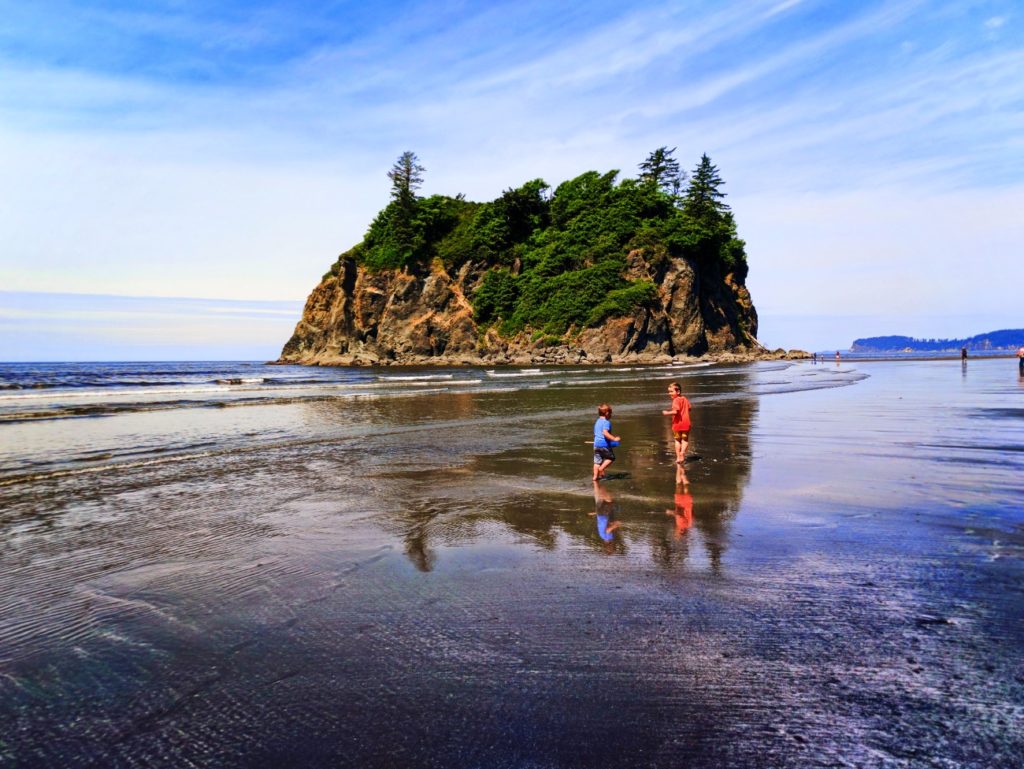
The Olympic Peninsula’s Tree of Life
You’ll see it called by a variety of names, including the Tree of Life, the Hanging Tree, the Cave Tree, and others. Accessible from the Kalaloch Campground of Olympic National Park, the Tree of Life is a very old Sitka spruce that is suspended above the beach by its roots, still stuck in the remaining soil as the rest of the bluff below it has eroded away. Going into the tree cave isn’t recommended, but appreciating the delicate nature of the Olympic Peninsula from the beach is perfect.
Walking the beach at Kalaloch and seeing the Hanging Tree is one of the best things to do on the Olympic Peninsula any time of year. It’s a very unique sight, and because not many people know where the tree actually is, there aren’t typically too many people hanging around it. Kalaloch Tree parking area – map here
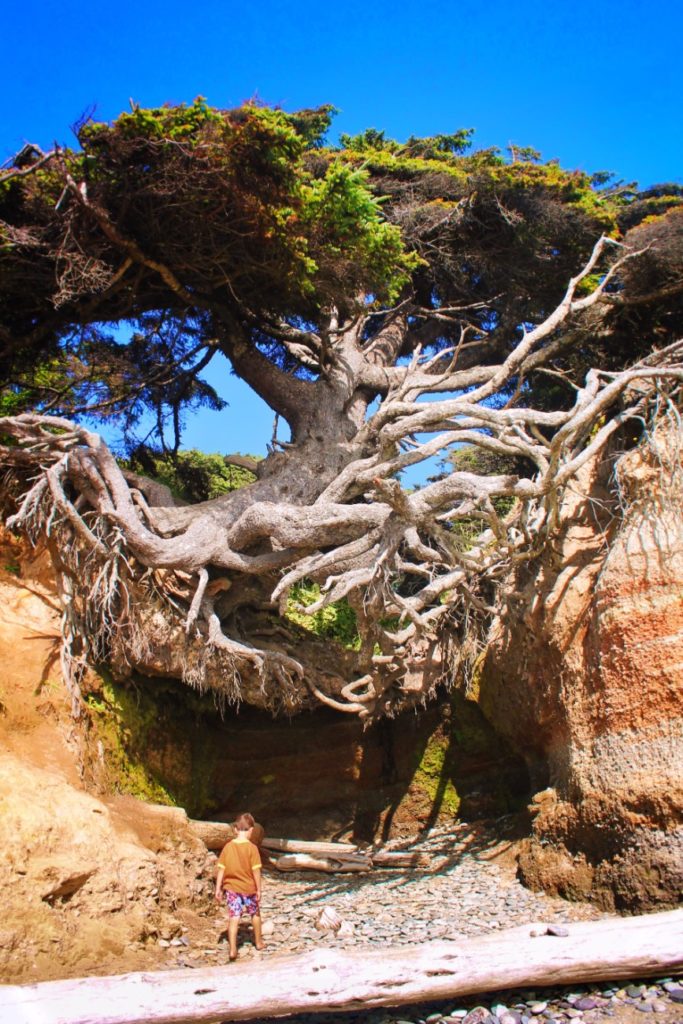
This list should give you a good start for planning the sorts of experiences you want to enjoy and help you make your Olympic Peninsula activity list. Enjoy a road trip on the Olympic Peninsula loop making stops wherever you can. It’s a wonderful way to make Pacific Northwest memories.
